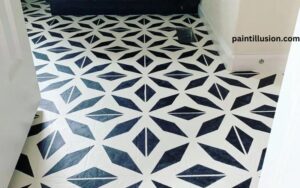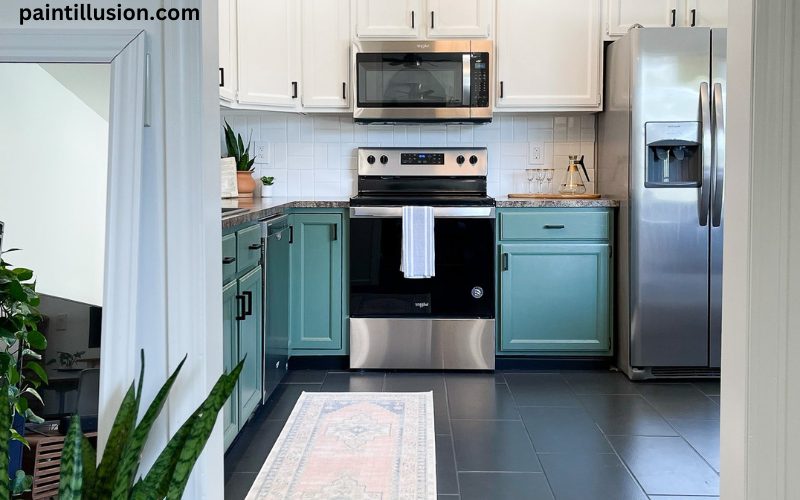Linoleum floors have been a popular choice for many homeowners due to their durability and affordability. However, over time, the color and design of linoleum can become outdated or worn out. If you find yourself in this situation, you may be wondering if you can paint linoleum to give it a fresh new look. The answer is yes! Painting linoleum is a cost-effective way to transform your floors and give them a new lease on life. In this article, we will explore the factors to consider before painting linoleum, the tools and materials needed, and a step-by-step guide to help you successfully complete your linoleum painting project.
Factors to Consider Before Painting Linoleum
Before you embark on your linoleum painting project, there are a few important factors to consider. Firstly, you need to assess the condition of your linoleum floors. If they are heavily damaged or have deep scratches, it may be best to replace them instead of painting. Painting can only provide a cosmetic fix and will not repair any structural issues. Additionally, linoleum floors that have a glossy finish may not hold paint as well as those with a matte or satin finish. It is recommended to lightly sand the surface to create a better adhesion for the paint.
Another factor to consider is the location of the linoleum floors. If they are in high-traffic areas such as the kitchen or entryway, they may be more prone to wear and tear. In such cases, it is important to choose a paint that is specifically designed for high-traffic areas. These paints are more durable and resistant to scratches and scuffs, ensuring your painted linoleum floors stay looking good for longer.

Tools and Materials Needed for Painting Linoleum
Before you begin your linoleum painting project, gather the necessary tools and materials. Here’s a list of what you’ll need:
- Paint roller and tray: Choose a roller with a medium nap that can hold enough paint for smooth coverage. A tray will help you evenly distribute the paint onto the roller.
- Paintbrush: A paintbrush will be useful for cutting in along the edges and corners of the linoleum.
- Painter’s tape: Use painter’s tape to protect any areas you don’t want to be painted, such as baseboards or cabinets.
- Sandpaper: If your linoleum has a glossy finish, use sandpaper to lightly sand the surface before painting.
- Primer: Apply a primer specifically designed for linoleum floors to ensure proper adhesion of the paint.
- Floor paint: Choose a paint that is specifically formulated for use on floors. These paints are more durable and resistant to wear and tear.
- Clear coat sealer: A clear coat sealer will provide an extra layer of protection for your painted linoleum floors.
Step-by-step Guide to Painting Linoleum
Now that you have gathered all the necessary tools and materials, it’s time to start painting your linoleum floors. Follow this step-by-step guide for a successful linoleum painting project:
- Prepare the surface: Thoroughly clean the linoleum floors to remove any dirt, dust, or grease. Use a mild detergent and warm water, and allow the floors to dry completely.
- Sand the surface: If your linoleum has a glossy finish, lightly sand the surface using fine-grit sandpaper. This will create a better surface for the paint to adhere to.
- Apply primer: Apply a thin coat of primer using a paint roller. Make sure to cover the entire surface evenly. Allow the primer to dry according to the manufacturer’s instructions.
- Paint the linoleum: Once the primer is dry, apply the floor paint using a paint roller. Start at one corner and work your way towards the exit, ensuring even coverage. Allow the first coat to dry completely before applying a second coat if needed.
- Apply clear coat sealer: After the paint has dried, apply a clear coat sealer using a paint roller. This will provide added protection and durability to your painted linoleum floors.
- Allow for curing time: Give your painted linoleum floors ample time to cure before placing any furniture or heavy objects on them. Follow the manufacturer’s instructions for curing time.
Tips and Tricks for a Successful Linoleum Painting Project
To ensure a successful linoleum painting project, here are some tips and tricks to keep in mind:
- Choose the right paint: Select a paint that is specifically formulated for use on floors and is compatible with linoleum. This will ensure better adhesion and durability.
- Clean and prep the surface: Properly cleaning and preparing the linoleum surface will help the paint adhere better and result in a smoother finish.
- Use a primer: Applying a primer designed for linoleum floors will improve adhesion and help the paint last longer.
- Allow for proper drying time: Be patient and allow each coat of paint and sealer to dry fully before applying the next one. Rushing the process can lead to a less durable finish.
- Protect the painted surface: Once your linoleum floors are painted, use furniture pads or protective mats to prevent scratches and scuffs.
- Regular maintenance: To extend the life of your painted linoleum floors, regularly clean them with a mild detergent and avoid using harsh chemicals or abrasive cleaners.
Maintenance and Care of Painted Linoleum
To keep your painted linoleum floors looking their best, regular maintenance and care are essential. Sweep or vacuum the floors regularly to remove dirt and debris that can cause scratches. Clean up spills immediately to prevent staining. Use a mild detergent and warm water for regular cleaning, and avoid using abrasive cleaners or harsh chemicals that can damage the paint. It is also a good idea to periodically apply a fresh coat of clear coat sealer to protect the painted surface and maintain its durability.
Can You Paint Linoleum in High-Traffic Areas?
Yes, you can paint linoleum in high-traffic areas with the right products and proper preparation. As mentioned earlier, choose a paint that is specifically designed for high-traffic areas to ensure durability and resistance to wear and tear. Additionally, make sure to thoroughly clean and prepare the linoleum surface before painting. Applying multiple coats of paint and a clear coat sealer can also provide extra protection for your painted linoleum floors in high-traffic areas. With the right approach, your painted linoleum floors can withstand the demands of busy spaces.
Frequently Asked Questions About Painting Linoleum
- Can you paint linoleum in the bathroom? Yes, you can paint linoleum in the bathroom. Just make sure to properly clean and prepare the surface, use a paint specifically designed for high-moisture areas, and apply a clear coat sealer for added protection.
- Will the paint scratch off? If the linoleum surface is properly prepared and a durable floor paint is used, the paint should adhere well and resist scratching. However, it is still important to take precautions such as using furniture pads and avoiding dragging heavy objects across the floor.
- How long will the paint last on linoleum floors? The longevity of the paint on linoleum floors depends on several factors, including the quality of the paint, the amount of foot traffic, and how well the floors are maintained. With proper care and maintenance, painted linoleum floors can last for several years.
- Can you paint over an existing linoleum pattern? Yes, you can paint over an existing linoleum pattern. However, it is important to thoroughly clean and prepare the surface before painting to ensure proper adhesion.
- Can you paint linoleum tiles? Yes, you can paint linoleum tiles. The process is similar to painting a solid linoleum floor. Make sure to clean and prepare the tiles properly, apply a primer, and use a durable floor paint.
Inspiring Ideas for Painted Linoleum Floors
Looking for some inspiration for your painted linoleum floors? Here are a few ideas to get you started:
- Geometric patterns: Create a modern and eye-catching look by painting geometric patterns on your linoleum floors. Use painter’s tape to create clean lines and different shapes, and fill them in with contrasting colors.
- Faux tile or wood: Give your linoleum floors the appearance of tile or wood by using stencils and different shades of paint. This can be a cost-effective way to achieve the look of more expensive flooring materials.
- Bold colors: Make a statement with bold and vibrant colors. Choose a single color or create a pattern using multiple colors for a fun and playful look.
- Abstract designs: Let your creativity run wild and create unique and abstract designs on your linoleum floors. This is a great option if you want to add a touch of artistry to your space.
- Mosaic patterns: Create the illusion of intricate mosaic tiles by painting small squares or shapes in various colors. This can give your linoleum floors a decorative and timeless appeal.
Conclusion
Painting linoleum floors can be a rewarding and cost-effective way to update your space. By considering the factors mentioned, gathering the necessary tools and materials, and following the step-by-step guide provided, you can successfully paint your linoleum floors and give them a fresh new look. Remember to properly maintain and care for your painted linoleum floors to ensure their longevity and durability. With a little creativity and effort, you can transform your linoleum floors into a stunning feature of your home. So go ahead, unleash your creativity, and enjoy the benefits of painted linoleum floors!
CTA: Ready to give your linoleum floors a makeover? Gather the tools and materials mentioned in this article and follow the step-by-step guide to painting linoleum. Remember to share your before and after pictures with us!


Every sentence feels like a key unlocking something new and valuable.